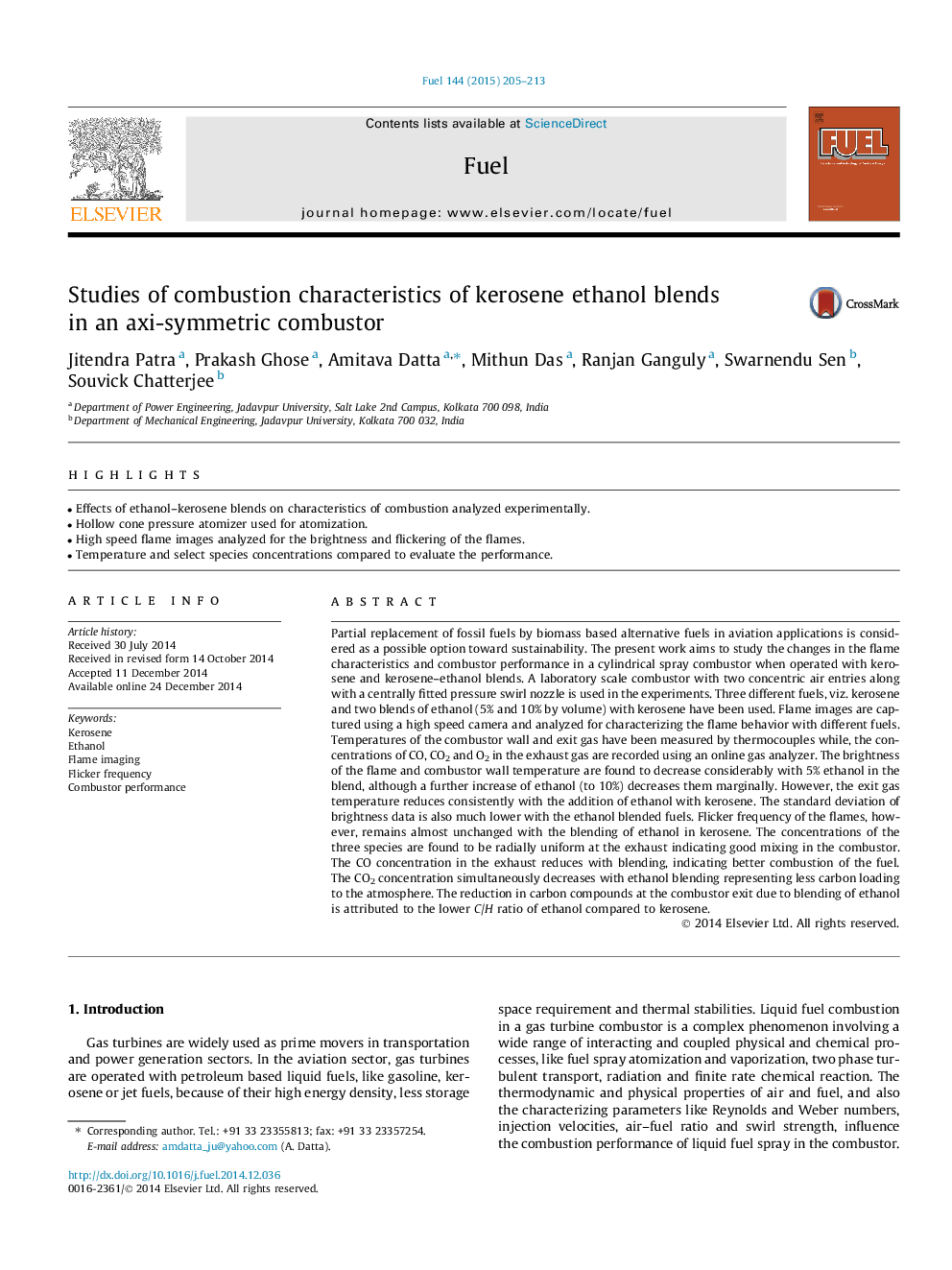| Article ID | Journal | Published Year | Pages | File Type |
|---|---|---|---|---|
| 205844 | Fuel | 2015 | 9 Pages |
•Effects of ethanol–kerosene blends on characteristics of combustion analyzed experimentally.•Hollow cone pressure atomizer used for atomization.•High speed flame images analyzed for the brightness and flickering of the flames.•Temperature and select species concentrations compared to evaluate the performance.
Partial replacement of fossil fuels by biomass based alternative fuels in aviation applications is considered as a possible option toward sustainability. The present work aims to study the changes in the flame characteristics and combustor performance in a cylindrical spray combustor when operated with kerosene and kerosene–ethanol blends. A laboratory scale combustor with two concentric air entries along with a centrally fitted pressure swirl nozzle is used in the experiments. Three different fuels, viz. kerosene and two blends of ethanol (5% and 10% by volume) with kerosene have been used. Flame images are captured using a high speed camera and analyzed for characterizing the flame behavior with different fuels. Temperatures of the combustor wall and exit gas have been measured by thermocouples while, the concentrations of CO, CO2 and O2 in the exhaust gas are recorded using an online gas analyzer. The brightness of the flame and combustor wall temperature are found to decrease considerably with 5% ethanol in the blend, although a further increase of ethanol (to 10%) decreases them marginally. However, the exit gas temperature reduces consistently with the addition of ethanol with kerosene. The standard deviation of brightness data is also much lower with the ethanol blended fuels. Flicker frequency of the flames, however, remains almost unchanged with the blending of ethanol in kerosene. The concentrations of the three species are found to be radially uniform at the exhaust indicating good mixing in the combustor. The CO concentration in the exhaust reduces with blending, indicating better combustion of the fuel. The CO2 concentration simultaneously decreases with ethanol blending representing less carbon loading to the atmosphere. The reduction in carbon compounds at the combustor exit due to blending of ethanol is attributed to the lower C/H ratio of ethanol compared to kerosene.
